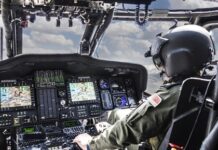
The aviation and aerospace industry is heavily regulated regarding air legislation and air safety standards and, importantly, aircraft airworthiness and maintenance. It is not surprising that aircraft maintenance is essential, which is why designated areas are created using such structures as Sunward Steel metal airplane hangars, for instance, so they can be thoroughly looked over and housed when not in use.
Not unsurprisingly again, aircraft engineering and maintenance operate to far higher standards and regulations than equivalent automotive and maritime engineering operations.
Aviation grade fittings
Right down to the thousands of gaskets, O-rings, rivets, nuts, bolts, and fasteners, which comprise a modern commercial jet, all items attached to the airframe of an aircraft must be purchased from approved sources and are accompanied by individual certifications.
This is mind-boggling when it is considered that tens of thousands of these fittings hold a standard passenger jet together, and every one of them has its own certification! That certification provides traceability in the event of a failure or malfunction. In fact, each individual nut and bolt can be traced back through retailers to its original point of manufacture, right down to the date and batch number of its origin.
Procurement of commercial consumables
Notwithstanding the heavy regulation with respect to aviation fixtures and fittings, a number of unregulated or ‘commercial grade’ hardware and consumable items are indirectly applied to the process of routine aviation maintenance. The range and application of these ‘unregulated’ items is vast and can be anything from standard commercial screws and fasteners to lubricants and silicone sealants. Related tooling and accessories, including more common workshop items such as screwdrivers, wrenches, and drills, can be included in this commercial range.
A reliable commercial tooling and consumable supplier becomes as important to aerospace procurement and engineering support as its range of approved aviation suppliers. A commercial operation such as https://tradefixdirect.com/ typifies this level of supplier.
Supplier standards
While commercial-grade consumables used in aerospace applications are not subject to the same manufacturing standards, certification, and traceability as aviation-grade hardware and consumables, the source of those consumables must nevertheless be reputable and of good quality. Aspects such as batch quality and conformance and general product support should still be considered, albeit at a lesser standard compared to that of the fittings that find themselves physically attached to an airframe.
Aviation hardware and military specification
Aviation hardware finds its origins and standards interwoven with the military and sees a high level of technical expertise and quality control devoted to design and manufacture.
Nuts, bolts, O-rings, and gaskets all fall under what is termed a military specification or ‘Mil Spec’ regimen and carry standardized identifications such as part numbers across the aviation and aerospace industry.
Despite this higher design and quality standard, aviation parts nonetheless suffer weakness and unexpected failure.
In January 1986, the world watched on in disbelief as a planned NASA space launch went horribly wrong, proving fatal for the crew of seven astronauts. Space Shuttle Challenger was the first of two major catastrophes which marred the US space shuttle program.
The cause of the accident was later identified as a failure in the function of two small O-rings, which formed a seal in the spacecraft’s rocket booster.
Quality matters
When considering the sourcing of commercial-grade consumables for the aerospace industry, manufacturing, and quality standards may not be required to be of the same highly scrutinized standard as aviation spec hardware; however, the general quality and support still play a key part in the consideration of product and suppliers.


















